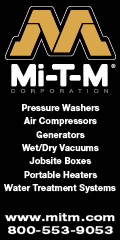
| Past Issues/Subscribe | Advertise |
Report: No Shift in Property Tax Burden from Business to Homeowners from Prop. 13
The June 7th CalChamber Alert newsletter also reported on a research report released June 5 examining the effects of Proposition 13. According to the report, there has been no shift of the property tax burden from businesses to homeowners. Despite numerous anecdotes or cherry-picked examples involving individual properties or disputes pending in court, Proposition 13 has done what it set out to do: bring predictability, stability and objectivity to California’s property tax structure, concludes the report prepared by the California Taxpayers Association (CalTax) using data from the state Board of Equalization (BOE).
Business Properties Paying More
The fact is, commercial properties are paying a slightly larger percentage of the property tax now than shortly after Proposition 13 passed, the CalTax analysis shows.
Looking at the share of the property tax burden for property subject to Proposition 13 limits, tax assessments on businesses and nonhomeowner-occupied property subject to Proposition 13 accounted for 60.26% of all assessments in 2011–12 compared to 58.16% in 1979–80.
Tax assessments on homeowner-occupied property accounted for 39.74% of all assessments in 2011–12, compared to 41.84% in 1979–80.
Also in 2011–12, the assessed value of all business and nonhomeowner-occupied property subject to Proposition 13 assessment limits was $847.2 billion more than the assessment value of all homeowner-occupied property.
Proposition 13, passed 35 years ago—on June 6, 1978—capped property tax rates for both residential and commercial properties at 1% of the assessed value. It also prevented a property’s assessed value from growing more than 2% a year.
Proposition 13 Revisited
The BOE data leads to three primary conclusions, according to the CalTax report:
•Homeowners remain the largest beneficiaries of Proposition 13’s property tax assessment protections. The property tax burden has not shifted from businesses to homeowners due to Proposition 13.
•Proposition 13’s assessment limits make the property tax a stable revenue source not subject to volatile changes in the real estate market.
•Even with rate limits, the property tax is a growing source of revenue to fund government services.
‘Split Roll’ Tax
Some opponents of Proposition 13 have argued over the years that the initiative created a "loophole" that allows businesses to avoid paying their "fair share" of the property tax. Opponents still argue that California should adopt a "split roll"—a form of property tax discrimination where the assessment roll is split, and businesses and owner-occupied homes are taxed differently.
A recent example was AB 188 (Ammiano; D-San Francisco), which would have completely altered the definition of "change of ownership" for commercial property for the purpose of increasing property taxes.
This "job killer" bill, opposed by the California Chamber of Commerce, was held in the Assembly Revenue and Taxation Committee in May. The bill did not receive enough support from the committee members.
Property Tax Stable Revenue
The report also found that through the ups and downs of the real estate market, the assessment value of property subject to Proposition 13 assessment limits has increased steadily. Assessed values and tax levies have fallen because of foreclosures and other hardships that have hit California’s economy especially hard. Proposition 13 has had a stabilizing effect, however.
When real estate values collapsed, assessed values for homeowner-occupied property and business and nonhomeowner-occupied property declined only 1.67%. Without Proposition 13’s acquisition-value assessments, local government would have collapsed with the decline in real estate values, the CalTax report states.
Growing Source of Revenue
The assessed value of all property subject to Proposition 13 assessment limits, collectively, has increased an average of 7.38% per year since 1978–79, the report states. This rate of growth has exceeded the growth in inflation and population combined.
As of 2011–12 (the most recent year for which data is available from the BOE), property under Proposition 13 assessment limits had an assessed value of $4.13 trillion.
Data from the state Board of Equalization exposes as a myth the contention that Proposition 13 has caused a shift in the property tax burden from commercial to residential properties. In fact, commercial properties account for a slightly larger percentage of property tax now.
|

| calrental.org |



